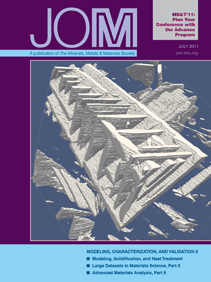 |
TMS
ONLINE | TMS
PUBLICATIONS | SITE
MAP JOM Material Matters Articles in Full-Text Format: April 2004 |
|
|
|
|
Exploring traditional, innovative, and revolutionary issues in the
minerals, metals, and materials fields.
|
|||||
| OUR LATEST ISSUE | |||||
|
VISIT THE JOM COVER GALLERY
|
Is a Patent a Monopoly? —Antitrust ConsiderationsArnold B. SilvermanThe term “monopoly” is often misused in the context of patent law, but has a better-defined meaning in antitrust laws. A lack of understanding of the interface between these two areas of law can lead to serious problems. Under patent law, a patent does not give one a monopoly in the sense of having the absolute right to practice the protected invention. It gives one the right to keep others from making, using, offering for sale, selling, and importing the claimed invention, and thereby provides a meaningful exclusionary right. Assume individual A has a patent which claims a chair having a seat and three legs, a backrest, and armrest. If individual B concludes that the chair would have greater stability if a fourth leg were added and obtains a patent for this improvement, he or she would have the right to exclude others from making a chair with four legs. As the chair has three legs, however, the addition of the fourth leg, while providing a basis for obtaining an improvement patent, does not avoid infringement of individual A’s patent. As the application of antitrust law is heavily dependent on the facts, this analysis provides only general guidance and an awareness of potential problems. It does not establish a bright line that is universally applicable. Some conduct is regarded as being a per se violation of the antitrust laws, meaning that proof of one’s engaging in the conduct establishes a violation. In other situations, a rule of reason is applied wherein numerous factors, including commercial and economic considerations, are evaluated. To the extent that one is engaged in conduct permitted by patent laws, one is immunized from antitrust laws. To determine what conduct is included within this shield, one must look to statutes and court rulings. A patent owner may stop others from violating the exclusionary rights provided by the patent. One may also license others to engage in conduct that otherwise might be a violation of the patent. One who seeks to obtain a benefit from the patent system by knowingly enforcing an invalid patent, however, has lost the shield against antitrust laws and can be found to have engaged in unlawful monopolization. Also, one who employs a patent as a vehicle for compelling others to purchase an unpatented product may be found to have engaged in unlawful “ tying” by enforcing or threatening to enforce the patent for purposes of controlling commerce in an unpatented product. Once a patent has expired, one cannot compel another to pay royalties under a licensing arrangement. Suppose individual A owns a dominant patent in the field of aluminum extrusion as well as 15 weak extrusion patents. Individual A could not compel individual B to take a package license under all of the patents if individual B were interested solely in licensing the dominant patent. A proper evaluation of a package licensing situation involves a much deeper investigation of the facts, such as determining if there is an individual price on each patent or a single price regardless of the number taken, or if there is a right of partial termination (i.e., can B terminate the license to some patents but not others?). In certain instances, it is proper for a licensee to make payment of royalties even though there has not been a clear determination that the patents in question cover the product or process. For example, on many television sets, there is a label that states “protected by one or more of the following patents,” followed by a long list of patent numbers. If the licensee is willing to pay a royalty per television set, or a percentage of sales of television sets as a matter of convenience rather than evaluating the claims of dozens of patents to determine whether or not a single claim of a single patent covers the product, this is acceptable. The key distinction is that the payment is agreed upon by the parties as a matter of “convenience to the parties,” rather than having the patentee compel payments for technology not covered by the patents. Another segment of antitrust laws deals with conspiracies in restraint of trade. It is generally proper for individual A to grant individual B a license under A’s patent. If A, however, agrees with C that C will have the right as a third party to approve or veto licenses proposed to be granted by such conduct, this would generally involve an unlawful conspiracy. These examples are only a sampling of the types of patent and antitrust issues that can arise, but are among those commonly encountered. It should be noted that antitrust violations can not only be employed defensively against a claim of patent infringement, but also can be asserted in a civil action seeking damages and can become the subject of criminal action. Arnold B. Silverman is chair of the Intellectual Property department and a member of Eckert Seamans Cherin & Mellott, LLC in Pittsburgh, Pennsylvania. For more information, contact A.B. Silverman at Eckert Seamans Cherin & Mellott, LLC, 600 Grant Street, 44th Floor, Pittsburgh, Pennsylvania 15219; (412) 566-2077; (412) 566-6099; e-mail abs@escm.com.
|
Copyright © 2004 by The Minerals, Metals & Materials Society.
Direct questions about this or any other JOM page to jom@tms.org.
Search TMS Document Center Material Matters Contents JOM TMS OnLine
